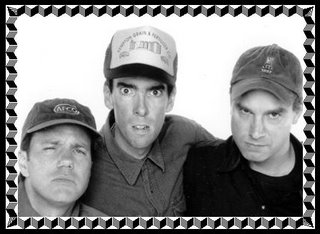While in New York last week, I had an amazing, eye-opening opportunity: I got to be an editor for a day and read submissions sent to an editor at a major publisher.
She showed me to the spare office housing her submission pile, consisting of unsolicited query letters and manuscript requests she made at conferences (agented submissions were elsewhere). She told me sort them into 3 stacks: YES (she should read them), NO (IMO not ready or not something she’d acquire) and MAYBE (something there but not enough for a YES).
She’d told me she was way behind in responding (as many editors and agents are, because they have so many other things to do), so I’d expected a Rumplestiltskinian mountain of envelopes. I found a fairly large pile, but not overwhelming.
I made my way through nearly 50 submissions, running the gamut from historical to paranormal to YA to women’s fiction (almost all of her requests were partials-synopsis and first three chapters, not full manuscripts).
I’ll divide my gleanings into two posts: DOs and DON’Ts. While the DOs won’t guarantee a sale or even a request for the full, and the DON’Ts won’t guarantee a rejection, these are things authors can control or work on in order to present themselves in the best possible light. I hope these suggestions help aspiring authors hone their submission packages.
So here are the DOs:
1. Use the cover letter to your advantage:
- remind her how you met
- include a short blurb about your book
- single space
By the time she opens your submission (some I opened were from 2007), she probably won’t remember your conversation based on your name alone. I was surprised by how many letters just said something like, “Here is the submission you requested, thanks for your time.” These left me feeling unprepared to read the pages. I wanted to know the usual query letter stuff: genre, word count, a few sentences showing you know your hook and/or goal, motivation and conflict, and a bit about the author’s experience.
And don’t forget to date your letter!! Submissions may get separated from their envelopes or the postmark can be blurred, and if you don’t mention where you met or include the date, she has no way to place your submission. Queries are single spaced, not double.
2. Design some sort of basic, professional letterhead. In today’s market, author self-promotion plays a very important role. So show an editor on first contact that you know how to market yourself. Letters where the author’s name and address were left justified and in the same type face as the body lacked personality and told me nothing about the author or that she knew her brand. I’m not suggesting anything over the top or busy enough to be distracting…name and address centered with a different font (not a crazy one!!) in a tasteful color was enough to let me know this author could set herself apart in an interesting way. If you’re submitting, you should have a business card. So consider incorporating an element from that.
One letter was a photocopy of the author’s stationery…I didn’t like that.
3. Use the least amount of packaging possible. Those sealed with too much of that plastic-y packing tape were very frustrating to open. And took too much time. Also, I learned that envelopes are easier, even for fulls. Boxes are cumbersome.
In the pages themselves,
4. Make sure you reveal information in a way the reader can understand and that you tell the reader what she needs to know when she needs to know it. I got the sense that some authors were purposely holding back information I wanted to know, maybe thinking I’d be more curious and interested.
Nope. I was frustrated and annoyed.
5. Maintain the reader’s interest/excitement/stakes that you establish with your opening hook. I see this a lot in judging contests, too. The first few paragraphs are great and draw me right in. I can’t wait to see what happens or what is said next. Then it’s as if the rug is pulled out from under me. All the tension, the pace is lost because either the thing you thought was suspenseful really isn’t–like you think the hero is in the midst of a medieval battle or a contemporary crime or being chased by an unseen nemesis, but you find out he’s just training/on a simulation. Or you think the heroine has a huge decision to make–and it’s only what to wear on a date.
6. Make sure something happens in your opening scenes. I didn’t see a lot of backstory overload, which I expected, but I did see long scenes where nothing really happens. The characters just stand or sit around and chat. Yes, one use of dialogue is to reveal character, and no, not every book has the pace of a romantic suspense, but I found myself getting very impatient and wanted to skip ahead when nothing was happening at all to move the story forward.
There’s can also be too much play by play, which isn’t story action, but just your heroine going through her day step by step by step by step by step…you get the picture.
Next week—the DON’Ts.

